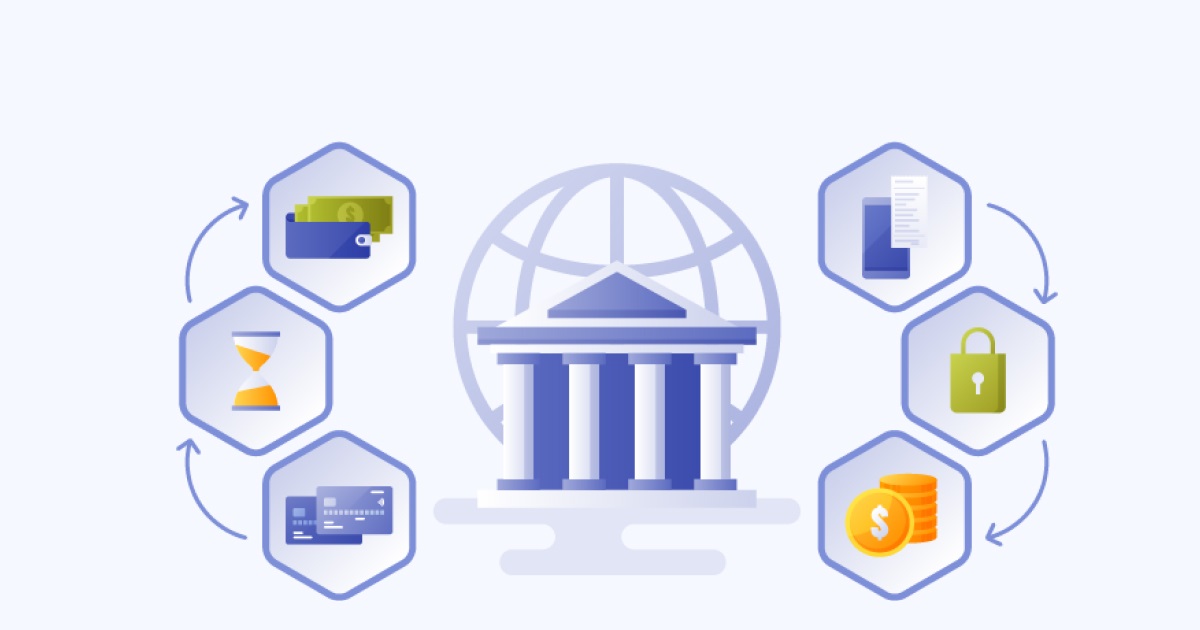
| December 13th, 2023 |
What is eBanking? Everything you need to know!
In the rapidly evolving digital age, the financial sector stands at the forefront of innovation, with electronic banking (eBanking) emerging as a transformative force. This blog delves into the intricacies of eBanking, uncovering its impact on traditional banking, the evolving landscape of financial services, and the unparalleled benefits it brings to both consumers and institutions.
Understanding eBanking —
1. Definition and Scope:
eBanking refers to the electronic delivery of banking services through digital channels. This encompasses online banking, mobile banking, electronic fund transfers, and other digital financial solutions. The scope of eBanking extends beyond traditional brick-and-mortar institutions, offering customers unparalleled access to financial services from the comfort of their homes or on the go.
2. Evolution of eBanking:
The journey of eBanking began with the introduction of ATMs, followed by online banking in the late 20th century. Today, it encompasses a wide array of services, including mobile banking apps, digital wallets, and virtual banking platforms. The continuous evolution of technology has paved the way for a seamless and secure banking experience.
The Impact on Traditional Banking —
1. Branch Transformation:
As eBanking gains prominence, traditional bank branches are undergoing a transformation. Many customers now prefer digital interactions over physical visits. This shift has led to a reevaluation of the role of physical branches, with some banks opting for smaller, tech-enabled spaces while investing heavily in online infrastructure.
2. Customer Expectations:
The rise of eBanking has heightened customer expectations. Instant transactions, personalized services, and round-the-clock accessibility are now the norm. Traditional banks are compelled to adapt and innovate to meet these expectations, fostering a healthy competition that benefits consumers.
Innovations Driving eBanking —
1. Mobile Banking Apps:
Mobile banking apps have revolutionized the way customers manage their finances. These apps offer a comprehensive suite of services, including account management, bill payments, and investment tracking. The user-friendly interfaces and real-time updates have made them indispensable for modern banking.
2. Digital Wallets:
Digital wallets have gained popularity for their convenience and security. By storing payment information securely on a mobile device, users can make quick and secure transactions, reducing the reliance on physical cards. Digital wallets are also evolving to support cryptocurrencies, adding another layer of innovation to eBanking.
3. Artificial Intelligence (AI) and Chatbots:
AI is playing a pivotal role in enhancing customer service and streamlining banking operations. Chatbots powered by AI provide instant responses to customer queries, assist in transactions, and offer personalized recommendations. This not only improves customer satisfaction but also increases operational efficiency for banks.
4. Blockchain and Cryptocurrencies:
The integration of blockchain technology is reshaping financial transactions. Cryptocurrencies, built on blockchain, offer decentralized and secure transactions. Some eBanking platforms are exploring the incorporation of cryptocurrencies, providing customers with alternative means of conducting financial transactions.
Benefits of eBanking —
1. Convenience and Accessibility:
One of the primary advantages of eBanking is the unparalleled convenience it offers. Customers can access their accounts, make transactions, and manage finances at any time and from anywhere with an Internet connection. This level of accessibility has transformed the banking experience, eliminating geographical constraints.
2. Cost Savings for Institutions:
eBanking enables financial institutions to reduce operational costs associated with maintaining physical branches and in-person transactions. The automation of routine tasks, such as transaction processing and customer service, results in significant cost savings for banks, which can then be passed on to customers or invested in further technological advancements.
3. Enhanced Security Measures:
With robust encryption protocols and multi-factor authentication, eBanking has become more secure than ever. Advanced security measures protect customer data and transactions, mitigating the risks associated with traditional banking methods. This heightened security fosters trust among users, encouraging greater adoption of digital banking solutions.
4. Streamlined Financial Management:
eBanking platforms often come equipped with tools for financial planning, budgeting, and investment tracking. Customers can gain a holistic view of their financial health, set savings goals, and monitor spending patterns. This empowers individuals to make informed financial decisions, promoting financial literacy and responsibility.
Challenges and Considerations —
1. Digital Inclusion:
While eBanking offers numerous benefits, digital inclusion remains a challenge. Not everyone has access to the internet or possesses the digital literacy required to navigate online banking platforms. Bridging this digital divide is crucial to ensure that the advantages of eBanking are accessible to a broader demographic.
2. Cybersecurity Risks:
The digital nature of eBanking introduces cybersecurity risks. Financial institutions must continually invest in cybersecurity measures to protect against evolving threats. This includes regular updates to encryption protocols, proactive monitoring of suspicious activities, and educating users about best practices for online security.
The Future of eBanking —
1. Continued Technological Advancements:
As technology continues to advance, eBanking will evolve accordingly. The integration of emerging technologies, such as augmented reality and voice-activated banking, is on the horizon. These innovations will further enhance the user experience, making banking even more intuitive and personalized.
2. Collaboration and Open Banking:
The future of eBanking is likely to be shaped by collaboration and open banking initiatives. Financial institutions may increasingly partner with fintech companies to leverage specialized services, creating a more interconnected financial ecosystem. Open banking will empower customers to seamlessly use multiple financial services through a single platform.
Conclusion —
eBanking has undeniably transformed the landscape of the financial industry. The ongoing digitization of banking services offers unprecedented convenience, security, and efficiency. As consumers increasingly embrace eBanking, the industry must adapt to meet evolving expectations. The future promises even greater innovation, with technologies like AI, blockchain, and open banking playing pivotal roles. Ultimately, the synergy between traditional banking values and digital advancements will define the trajectory of eBanking, shaping the financial experiences of generations to come.
